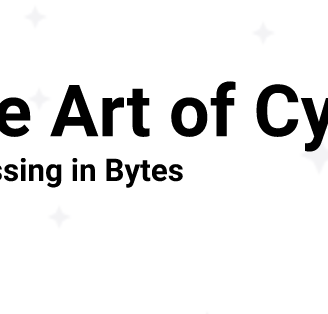
Infamous Cybercrimes




Cyber criminals are becoming more sophisticated at picking our virtual pockets. And most of us remain woefully unprepared. According to a 2016 survey conducted by PricewaterhouseCoopers, organizations rank cybercrime as the second most reported type of economic crime, up from fourth place.
This page lists some of the infamous cybercrimes that the world has witnessed. The proportion of damage caused by each of the crimes has been unimaginable and way beyond shock. These attacks are learning lessons for the current ICT generation to be more proactive in defending and trying to prevent possible cyber attacks.

Internet brought to a Standstill
A series of distributed denial of service (DDoS) attacks managed to greatly disrupt Internet use for users in North America and parts of Europe during 2016. The target of the attacks was Dyn, a company in charge of much of the internet’s domain name system (DNS) infrastructure, which is why the damage caused was so extensive.
While people with technical know-how could get around it, most typical internet users were affected for hours. Many of the world’s most popular sites were rendered unresponsive, including Twitter, Amazon, Netflix, GitHub, PayPal, Pinterest, the Guardian and Fox News. Read more
Digital warfare with physical consequences
One of the most terrifying cyber crime in history was the Stuxnet attack. After being planted on the target device, Stuxnet travels through a network in search of specific vulnerabilities.
If successful, Stuxnet instructs the device to carry out actions to cause physical damage, such as by drastically speeding up moving parts or shutting off cooling systems. It also sends false feedback to the primary controller, leaving its presence concealed until too late. Read more
WannaCry Ransomware
One of the latest cyber attack which gained so much attention that happened to knock medical records and much more.
WannaCry is an example of crypto ransomware, a type of malicious software (malware) used by cybercriminals to extort money.
Ransomware does this by either encrypting valuable files, so you are unable to read them, or by locking you out of your computer, so you are not able to use it.
Ransomware that uses encryption is called crypto ransomware. The type that locks you out of your computer is called locker ransomware. Read more
Melissa Virus
One attack would change that in a significant way.
In late March 1999, a programmer named David Lee Smith hijacked an America Online (AOL) account and used it to post a file on an Internet newsgroup named “alt.sex.” The posting promised dozens of free passwords to fee-based websites with adult content. When users took the bait, downloading the document and then opening it with Microsoft Word, a virus was unleashed on their computers. The Melissa virus, reportedly named by Smith for a stripper in Florida, started by taking over victims’ Microsoft Word program. Read more
Morris Worm
At around 8:30 p.m. on November 2, 1988, a maliciously clever program was unleashed on the Internet from a computer at the Massachusetts Institute of Technology (MIT).
This cyber worm was soon propagating at remarkable speed and grinding computers to a halt. Read more
Sony Pictures
Sony Pictures was subjected to a nightmare of a hack in late 2014, when hackers calling themselves the ‘Guardians of Peace’ leaked confidential data stolen from their company. This data included internal emails, plans for future films, copies of unreleased films, specific details of executives’ salaries, and even personal information about employees and their family members. Read more
NASA & DOD
Jonathan James, 15, manages to penetrate U.S. Department of Defense division computers and install a backdoor on its servers, allowing him to intercept thousands of internal emails from different government organizations, including ones containing usernames and passwords for various military computers. Using the info, he steals a piece of NASA software. Systems are shut down for three weeks. Read more
LulzSec
Lulz Security, or LulzSec, a break-off group from hacking collective Anonymous, attacks Fox.com and then targets more than 250 public and private entities, including an attack on Sony’s PlayStation Network. They then publicize their hacks though Twitter to embarrass website owners and make fun of insufficient security measures. Read more

In the ever-evolving realm of cybersecurity, where threats are as dynamic as the technology itself, one term that continues to send shivers down the spines of security experts and organizations alike is "Advanced Persistent Threats" or APTs. These clandestine and highly sophisticated cyberattacks have been making headlines for years, infiltrating networks, and compromising data on a global scale. In this blog, we embark on a journey to unravel the enigma of APTs, providing valuable insights into their nature, tactics, and the evolving landscape of cyber espionage.
Whether you're a seasoned cybersecurity professional or someone looking to enhance their knowledge of the digital threat landscape, this blog series promises to provide valuable insights into the world of APTs. By understanding the intricacies of these threats, you'll be better equipped to safeguard your digital assets and join the ranks of those who defend against the relentless tide of cyber espionage. Stay tuned for an in-depth exploration of APTs, where knowledge is the most potent weapon in the fight for cybersecurity.
Subscribe newsletter

